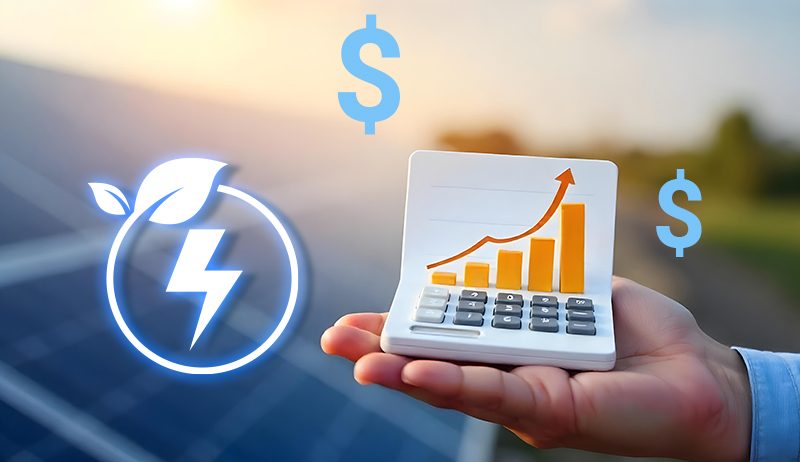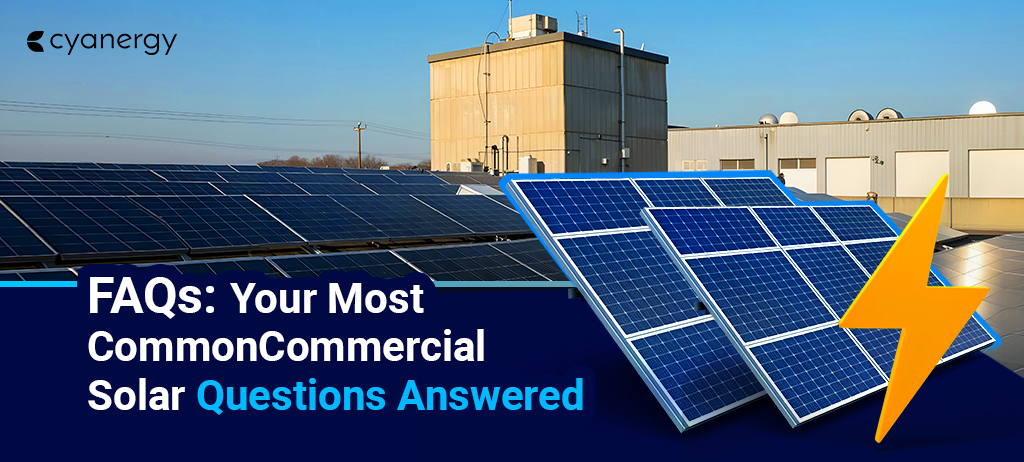The commercial industry deals with energy ups and downs, and it is still common now. Changing oil and gas prices, changes in the types of energy being used, and the rapid growth in clean energy investments are just some challenges companies must handle.
Recent global changes have shown how important it is for these companies to focus on staying strong and flexible. And that’s why here are top 8 energy technologies every business should know in 2024
Australian businesses adjusted their operations smartly throughout 2024 to succeed in this changing environment. It is relevant for all parts of industry, including oil and gas, power utilities, and renewable energy businesses.
In looking closer at this transformation, Australian companies are creatively using renewable technologies—like advanced commercial solar setups that allow homes to generate their own power and wind and hydro energy sources that fuel industries.
Energy Technology and its Impact on Australia’s Future
Energy technology involves the tools and systems we use to produce, store, and distribute energy. It includes methods for generating power from sources such as fossil fuels, wind, solar, hydro, and nuclear energy.
Over time, energy technology has evolved from simple techniques, like burning wood for heat, to more advanced methods, like using solar panels to convert sunlight into electricity.
Energy technology is expected to impact our lives in many ways in the future. As the world aims to reduce pollution and combat climate change, cleaner energy sources are becoming more important.
Solar, wind, and other renewable energy sources produce little or no harmful emissions, making them much better for the environment than traditional fossil fuels like coal and oil.
Advancements in energy storage, like improved batteries, will help make renewable energy more reliable by storing power for times when the sun isn’t shining or the wind isn’t blowing.
Energy technology also has the potential to make energy more affordable and accessible. By improving efficiency, we can generate and use energy more effectively, which could lower costs. This is especially beneficial for developing regions where access to energy is limited or too expensive.
Energy technology is a crucial area of innovation that will shape our future. Improving and expanding sustainable energy options can help us create a cleaner, more resilient, and more accessible energy system, which will benefit both people and the planet.
Energy Technologies Every Business Should Know in 2024
In 2024, as Australia continues its shift towards a low-carbon economy, several energy technologies have emerged as transformative solutions for businesses.
These technologies support cost efficiency, sustainability, and regulatory compliance, making them essential for business strategies.

1. Solar and Battery Storage Integration
Solar energy remains a cornerstone for businesses looking to minimise grid dependency. Pairing solar with advanced battery storage allows companies to use stored power during peak periods and reduce energy costs.
Australia is seeing a surge in lithium-ion and flow battery technology, which provides greater storage capacity and longer life cycles.
This combo allows companies to manage their energy supply effectively and protect against fluctuating grid prices. Many businesses are achieving “self-sufficiency” by combining solar generation with high-capacity battery systems.
2. Smart Grid and Demand Response Technology
Smart grids enable businesses to use energy more efficiently by adapting their demand to the current grid supply.
Advanced metering infrastructure (AMI), demand response management systems (DRMS), and real-time analytics are making it easier for companies to track, control, and reduce their energy consumption.
Innovative grid technologies allow companies to participate in demand response programs that reward them for reducing usage during peak periods. This results in energy cost savings and promotes grid stability, which benefits both the business and the community.
3. Hydrogen Energy
Hydrogen is rapidly gaining traction in Australia as a clean fuel for industries that require high-energy processes, like heavy manufacturing, logistics, and shipping.
Green hydrogen production—where hydrogen is produced using renewable energy sources—is becoming more cost-effective, and government investments in hydrogen infrastructure are on the rise.
For businesses in industries with traditionally high carbon footprints, hydrogen offers a pathway to significant emissions reductions. The establishment of hydrogen hubs in Australia also means reduced costs and easier access.
4. Electric Vehicle (EV) Charging Infrastructure
As the adoption of electric vehicles rises, so does the need for robust charging infrastructure. Businesses that install EV charging points are seeing returns not only in energy savings but also in customer attraction and employee retention.
Fast-charging stations, vehicle-to-grid (V2G) capabilities, and software that manages EV charging based on grid demand are vital developments.
Companies that embrace EV infrastructure position themselves as eco-friendly and future-focused, attracting clientele and retaining a workforce that values sustainability. The shift also lowers fleet fuel costs and can offer additional revenue from the V2G capabilities.
5. Energy Management and IoT-Based Monitoring Systems
Smart energy management systems help businesses track and optimise their energy usage in real time.
IoT sensors, machine learning, and cloud-based analytics allow businesses to gather data on energy consumption and adjust operations to minimise waste.
These systems provide detailed insights, enabling companies to predict peak usage, avoid overconsumption, and lower costs. IoT-based energy management also enhances sustainability reporting, which clients and regulators increasingly value.

6. Carbon Capture and Storage (CCS)
CCS technology captures carbon emissions from industrial processes and stores them underground to prevent atmospheric release.
Australia’s CCS projects are becoming more affordable and scalable thanks to innovations in storage and monitoring technologies.
CCS is beneficial for heavy industries where eliminating emissions is difficult. By investing in CCS, businesses can significantly reduce their carbon footprint and align with Australia’s net-zero goals.
7. Renewable Microgrids
Microgrids allow businesses, especially in remote locations, to establish self-contained energy systems powered by renewables like solar and wind.
Microgrids are becoming more resilient and scalable with advances in battery storage and grid-management software.
For businesses in rural or off-grid areas, microgrids provide energy independence and reduce reliance on volatile energy markets. They also offer a way to cut emissions and manage energy costs effectively.
8. Artificial Intelligence and Machine Learning for Energy Optimisation
AI and machine learning are transforming how companies analyse and predict energy usage.
Algorithms now use real-time data to optimise energy consumption, predict equipment maintenance needs, and simulate energy strategies.
AI-driven energy solutions help businesses avoid costly outages, improve efficiency, and make better long-term energy decisions. They also aid in regulatory compliance and sustainability tracking, which is increasingly important in Australia.
For Australian businesses, these energy technologies offer pathways to reduce operational costs, lower emissions, and enhance resilience in a dynamic energy market.
Embracing these innovations aligns with Australia’s net-zero ambitions and provides businesses with a competitive edge as sustainability becomes a key driver in market differentiation.
Energy-Saving Technology for Your Business
Businesses in Victoria (VIC) and New South Wales (NSW) are increasingly focusing on energy-saving technologies to reduce their environmental impact and save on costs.
Adopting these technologies helps companies cut energy expenses while also supporting a greener future.
Smart Thermostats
Smart thermostats, for instance, help manage heating and cooling systems more efficiently.
They help reduce unnecessary energy use by learning usage patterns and adjusting temperatures based on occupancy. We can also control it remotely via smartphone apps.
Commercial Solar
Commercial Solar photovoltaic (PV) systems are another popular option, converting sunlight into electricity.
Businesses in sunny regions like VIC and NSW can save on energy costs, reduce their carbon footprint, and benefit from government incentives that offset installation expenses.
Power Factor Correction (PFC) Technology
Energy Star Labels
Energy-efficient appliances also offer significant savings. Appliances certified for high efficiency, such as ENERGY STAR-rated devices, consume less energy without sacrificing performance.
Programs like the Victorian Energy Upgrades (VEU) and the NSW Energy Savings Scheme provide financial incentives to encourage the switch to these efficient solutions.
Commercial Heat Pumps

How Can Cyanergy Help Grow Your Business?
As a business owner, you recognise the value of energy efficiency and cost savings. Upgrading your business appliances to more energy-efficient models can significantly reduce your energy consumption and operational expenses.
However, the initial cost of such upgrades may be expensive. Here’s where Cyanergy can help.
We can assist your business with a variety of financial options to help alleviate the initial blow. Upgrade to energy-efficient equipment today and reap the long-term benefits.
Contact Cyanergy today, and we will help you develop a structured action plan. Our experienced team is available to assist you at all times. Talk to an expert and get started.







